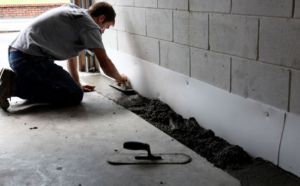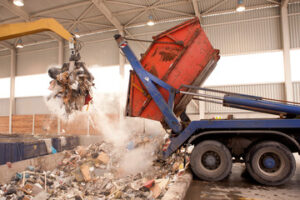Commercial HVAC equipment is a substantial investment, and it’s important to get the most return on this investment. Performing maintenance on your equipment can extend its lifespan.
Unexpected breakdowns disrupt business operations. Keeping up with routine inspections prevents this from happening. Click the Commercial Hvac Maintenance Services to learn more.

Typical commercial maintenance services include air filters, cleaning the evaporator coil and blower fan, checking thermostats for calibration, clearing clogged drain lines and lubricating motor bearings.
Preventative Maintenance
Commercial HVAC system maintenance includes routine inspections, cleaning, and adjustments that prevent problems from arising. Unlike reactive maintenance, which only occurs after your commercial heating and cooling system fails, preventative maintenance services help protect your investment, optimize equipment performance, and reduce operational costs.
The goal of preventative maintenance is to catch small issues before they become big ones, which is especially important for high-use areas like commercial settings where a sudden breakdown could impact productivity and sales. Performing regular inspections and repairs also helps extend the lifespan of your commercial equipment and may save you from costly replacement costs in the future.
When you choose a company to perform your commercial hvac maintenance services, it’s important to find one with experience and a good reputation. Ask friends and colleagues for recommendations or search online to see what others have to say about their service experiences. A reputable commercial HVAC service will have plenty of positive reviews in multiple locations and a long list of satisfied customers.
During preventative maintenance visits, professionals check for issues like airflow, filter replacements, lubrication, and more to keep your equipment running efficiently. They can also clean components like the evaporator and condenser coils to improve heat exchange efficiency, which can reduce energy consumption. They can also clean drain lines to prevent water damage and mold growth. And they can calibrate your thermostat to ensure it’s operating correctly and maximizing energy efficiency.
A well-maintained commercial HVAC system is more energy efficient, which means lower utility bills. In fact, ENERGY STAR estimates that a commercial HVAC system that is properly maintained saves up to 6 percent in energy costs annually. That’s money that you can put back into your business or use to hire more employees.
In addition to reducing operating costs, preventative maintenance can also help your facility maintain compliance with local codes. For example, regular inspections and testing can ensure your systems meet fire safety standards all year round. They can also ensure your building meets ventilation requirements for health and safety purposes.
Inspections
During inspections, a technician will take a close look at your system to see how it’s performing. They will inspect the air filter, refrigerant pressure, drain pans, evaporator and condenser coils, and all moving parts to ensure they’re functioning properly. This prevents small problems from becoming larger issues and keeps your commercial HVAC equipment running at optimal efficiency.
Dirty or clogged filters force the system to work harder to circulate air, which in turn drives up your energy bills. Coils that are dirty or damaged can also lower efficiency, resulting in higher cooling costs. Inspectors will check these components and clean them as necessary to maintain peak performance.
Fan blowers are responsible for distributing conditioned air throughout your building, so they’ll be inspected to make sure they are operating smoothly and efficiently. Fans can be impacted by dust or mold buildup, which affects air quality and ductwork flow. Inspectors will also look for signs of leakage and other issues that can impact ventilation.
HVAC technicians are trained to recognize and communicate potential problems, helping you get the repairs you need without spending extra money. They’ll share a detailed inspection report with you to help your facility managers track a specific equipment’s condition over time and maintain warranty compliance.
The report will include information like the date of your last service, the recommended frequency for upcoming services, and any previous repairs or replacements. This allows you to monitor a specific unit’s performance over time and helps you budget for any future needs.
Depending on the season, additional services may be suggested. For example, during summer, when humidity can cause a lot of damage, inspectors will recommend checking dehumidification systems and making any necessary adjustments before the heat hits. Similarly, during the transitional period of spring and fall, they’ll perform an energy assessment and make any needed adjustments to prepare your heating and cooling equipment for harsh weather conditions. They’ll also test emergency backup systems to ensure they’re ready to operate if your primary units fail. This prevents spikes in your utility costs and unforeseen breakdowns during the most challenging weather conditions.
Cleaning
Commercial HVAC systems use up a lot of energy. Regular cleanings keep your equipment working efficiently, and this saves you money on power bills and cuts the risk of breakdowns and repairs. Proper maintenance also extends the lifespan of your equipment by several years.
Cleaning services offer a range of benefits, from cleaning filters and coils to lubricating fans and cleaning ductwork. They help you get the most out of your HVAC equipment and make your building feel more pleasant for employees and visitors.
Dirty air ducts and vents can circulate dust particles, mold spores, pet dander, and other pollutants throughout your building. These contaminants can trigger allergies and respiratory issues. A professional duct cleaning service removes these contaminants and makes your air clean and healthy for everyone in your building.
HVAC cleaning helps the system function better, reduces energy consumption, and improves indoor air quality. Professionals can clean or replace air filters, wash the evaporator and condenser coils, and clear out drain lines. They can also lubricate bearings and motors, reduce friction, and calibrate the thermostat.
When hiring an air duct cleaning company, look for a team with experience in commercial spaces. These companies will have the tools and knowledge to provide a thorough cleaning, even in difficult-to-reach places.
Cleaning the commercial HVAC unit can be a time-consuming process. KM Facility Services has the equipment and experience to handle this task quickly and effectively.
The cleaning process includes removing dust and debris from the fan, blower, and coils. Cleaning the air handling unit and ductwork prevents the buildup of dirt, fungus, and bacteria, which can cause damage to your equipment and lead to expensive repairs or replacement costs.
The air ducts are the source and pathway for dust and other contaminants. Over time, they can accumulate pounds of dust, fungus, and other debris. An experienced air duct cleaning service will use special tools to break this debris loose, then remove it. They will also inspect the ducts for leaks and unbalanced airflow, and they will seal any leaks when possible to boost efficiency and improve occupant comfort.
Repairs
In addition to preventative maintenance, a commercial HVAC company can also provide repair services. Typically, these services are needed when the system breaks down or isn’t working properly. When this happens, the business suffers lost productivity and can lose money. To avoid these issues, business owners can sign up for an HVAC maintenance plan. These plans often include regular inspections and repairs to keep the building at peak performance.
The technicians who offer these services will be familiar with the unique needs of commercial spaces. They will be able to identify problems and recommend the best repair options. They will also be able to fix the issue quickly and efficiently. These experts can also help the commercial property owner reduce energy costs by ensuring that the equipment is running at its peak efficiency.
Routine commercial HVAC maintenance ensures that the cooling and heating systems are always ready to work when they are needed. This reduces energy consumption and improves indoor air quality. It can also extend the lifespan of the equipment and protect any warranties that may be in place. A well-timed tune-up prepares the system for high demand periods and ensures that it will be able to meet these demands without breaking down.
Regular service can also identify small problems before they grow into major issues. This can save the business owner money on expensive repairs in the future. It can also ensure that the equipment will continue to work properly and support their business operations.
Choosing the right commercial HVAC company to provide maintenance services is an important decision for any business owner. The technicians should have experience working with commercial spaces and a solid reputation in the area. They should also be licensed and bonded. In addition, they should have the necessary training and certifications to handle the complexities of these systems.
A commercial HVAC system must be inspected regularly to make sure that it is functioning properly and delivering the expected level of comfort. This can save the business owner money on energy bills and extend the lifespan of the system. In addition, it can help improve indoor air quality and prevent the growth of mold, fungus, and other unhealthy microorganisms.








